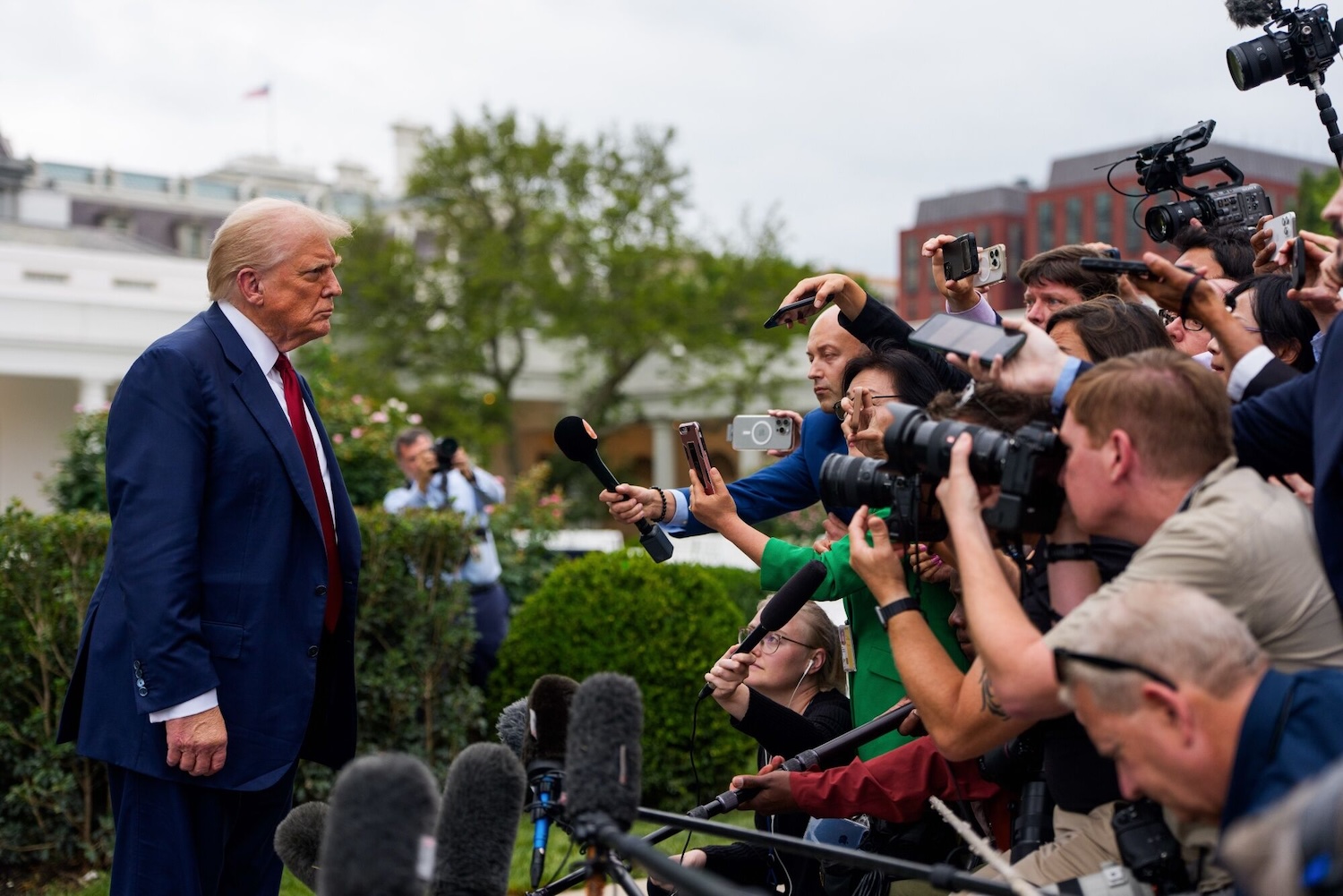Trump sacks data chief over poor job numbers
President says report was ‘rigged’ to make him look bad

WASHINGTON – US President Donald Trump has fired a top Labor Department official after the release of unexpectedly weak employment figures, accusing her without evidence of manipulating the figures to make his administration look bad.
A White House official defended the move, saying there had been concerns for some time about the quality of economic data published by the Bureau of Labor Statistics (BLS).
In a second surprise economic policy development, the door for Trump to make an imprint on a Federal Reserve — with which he clashes almost daily for not lowering interest rates — opened earlier than anticipated when Fed Governor Adriana Kugler unexpectedly announced her resignation on Friday.
The two developments further rattled a stock market already reeling from Trump’s latest barrage of tariff announcements and the weak jobs data. The benchmark S&P 500 Index sank 1.6% in its largest daily drop in more than two months.
Trump accused Erika McEntarfer, appointed by former president Joe Biden, of faking the jobs numbers. There is no evidence to back Trump’s claims of data manipulation by the BLS, which compiles the closely watched employment report as well as consumer and producer price data.
A representative for the BLS did not respond to a request for comment.
Friday began with BLS reporting the US economy created only 73,000 jobs in July, but more stunning were net downward revisions showing 258,000 fewer jobs had been created in May and June than previously reported.
“We need accurate Jobs Numbers. I have directed my Team to fire this Biden Political Appointee, IMMEDIATELY. She will be replaced with someone much more competent and qualified,” Trump said in a post on his Truth Social network.
“Important numbers like this must be fair and accurate, they can’t be manipulated for political purposes,” he said. He later added that the figures “were RIGGED in order to make the Republicans, and ME, look bad”.
US data agencies enjoy a global reputation for “gold standard” statistics — one Trump may now be putting in danger — and economists of all stripes dismissed the idea of politically motivated manipulation.
But a Trump administration official who requested anonymity said the White House has been dissatisfied with how large the revisions have been in the recent BLS data, and with lower survey responses. The problem started during the Covid pandemic and has not been addressed in the years since.
“There are these underlying problems that have been festering here for years now that have not been rectified,” the person said. “The markets and companies and the government need accurate data, and we just weren’t getting that.”
The BLS has already reduced the sample collection for consumer price data as well as the producer price report, citing resource constraints. The government surveys about 121,000 businesses and government agencies, representing approximately 631,000 individual worksites for the employment report.
The response rate has declined from 80.3% in October 2020 to about 67.1% in July, BLS data shows.
A Reuters poll last month found 89 of 100 top policy experts had at least some worries about the quality of US economic data, with most also concerned that authorities are not addressing the issue urgently enough.
In addition to the concerns over job market data, headcount reductions at BLS have resulted in it scaling back the scope of data collection for the Consumer Price Index, one of the most important gauges of US inflation, watched by investors and policymakers worldwide.
Trump’s move fed into concerns that politics may influence data collection and publication.
“Politicising economic statistics is a self-defeating act,” said Michael Madowitz, principal economist at the Roosevelt Institute.
“Credibility is far easier to lose than rebuild, and the credibility of America’s economic data is the foundation on which we’ve built the strongest economy in the world. Blinding the public about the state of the economy has a long track record, and it never ends well.”
Meanwhile, Kugler’s surprise decision to leave the Fed at the end of next week presents Trump an earlier-than-expected opportunity to install a potential successor to Fed chair Jerome Powell on the central bank’s board of governors.
Trump has threatened to fire Powell repeatedly because the Fed chief has overseen a policymaking body that has not cut interest rates as Trump has demanded. Powell’s term expires next May, although he could remain on the Fed board until Jan 31, 2028, if he chooses.
Trump will now get to select a Fed governor to replace Kugler and finish out her term, which expires on Jan 31, 2026. A governor filling an unexpired term may then be reappointed to a full 14-year term.
Some speculation has centred on the idea Trump might pick a potential future chair to fill that slot as a holding place.
Leading candidates for the next Fed chair include Trump economic adviser Kevin Hassett, Treasury Secretary Scott Bessent, former Fed governor Kevin Warsh and Fed Governor Chris Waller, a Trump appointee who this week dissented with the central bank’s decision to keep interest rates on hold, saying he preferred to start lowering them now.
Source – Bangkok News




